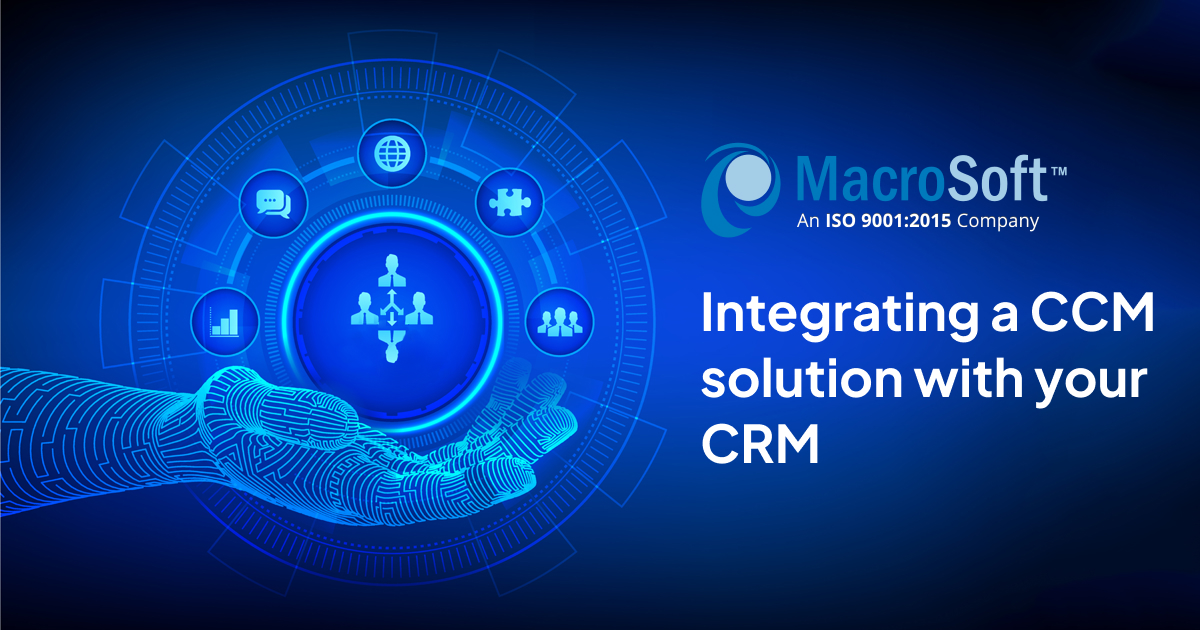

Integrating a customer communication management solution with your CRM can greatly improve the way your business interacts with customers, resulting in increased customer satisfaction and improved business performance. In this blog post, we will explore the benefits of integrating these two systems, the process of integration and the best practices for maintaining the integration.
Benefits of integration:
- Streamlined communication: By connecting a customer communication management solution with your CRM, you can access customer information and history directly from the communication platform, making it easy to respond to customer inquiries and resolve issues quickly.
- Automation: With the ability to automate repetitive tasks such as sending follow-up emails or scheduling calls, you can save time and resources while also ensuring that no customer communication falls through the cracks.
- Insightful data: Integrating a customer communication management solution with your CRM provides valuable insights into customer behaviour. By analysing data from customer interactions, you can identify patterns and trends that can help inform your marketing and sales strategies.
- Improved customer experience: By having all customer interactions in one place and automating repetitive tasks, you can provide a more personalized, efficient, and consistent customer experience.
- Enhanced Communication Efficiency: By integrating your CCM solution with your CRM, you gain seamless access to customer information and communication history within a single platform. This integration streamlines communication, enabling your team to respond to customer inquiries promptly, provide personalized solutions, and resolve issues faster.
- Automated Workflows: Integration allows you to automate repetitive tasks, such as sending follow-up emails, scheduling appointments, or triggering personalized notifications. By reducing manual effort, your team can focus on building meaningful relationships with customers, ultimately driving greater customer satisfaction and loyalty.
- Holistic Customer Insights: By combining data from your CCM solution and CRM, you gain comprehensive insights into customer behaviour, preferences, and interaction patterns. Analysing this data helps you understand your customers better, identify opportunities for cross-selling or upselling, and tailor your marketing campaigns for maximum impact.
- Consistent Customer Experience: Integration ensures that customer interactions across different touchpoints are unified and consistent. When all customer communication is centralized, you can provide a cohesive experience regardless of the channel used, fostering trust and loyalty.
Integration process:
- Define Integration Objectives: Clearly outline your integration goals and identify the specific data you want to synchronize between the CCM solution and CRM. Determine which customer touchpoints and communication channels need to be integrated.
- Choose Compatible Systems: Select a CCM solution and CRM platform that offer robust integration capabilities. Ensure compatibility between the two systems and verify that APIs or connectors are available for seamless data transfer.
- Establish Data Mapping: Map the data fields between the CCM solution and CRM to ensure accurate and meaningful data transfer. Define rules for data synchronization, handling duplicates, and managing potential conflicts.
- Develop or Configure Integration: Depending on the complexity of the integration, you can choose to develop a custom integration using APIs or utilize pre-built connectors offered by the vendors. Involve your IT team or work with experienced developers to ensure a smooth integration.
- Test and Validate: Thoroughly test the integration in a controlled environment. Validate data synchronization, workflow automation, and communication tracking to ensure that everything functions as intended. Conduct user acceptance testing to gather feedback and address any issues.
Best Practices for Integration Maintenance:
- Regular Monitoring and Maintenance: Once the integration is live, establish a monitoring system to track data flows, identify potential errors, and ensure continuous functionality. Regularly update and patch the integration to address any vulnerabilities and stay aligned with software updates.
- Data Security and Privacy: Prioritize the security and privacy of customer data during integration. Implement encryption protocols, access controls, and data anonymization techniques to comply with relevant data protection regulations and safeguard customer information.
- Training and User Adoption: Provide comprehensive training to your team members on how to effectively use the integrated system. Encourage adoption by highlighting the benefits and showcasing how it improves their workflow and enhances customer interactions.
- Continuous Optimization: Continuously analyze the performance of the integrated system. Track key metrics such as response times, customer satisfaction scores, and conversion rates. Use these insights to optimize workflows, refine automation rules, and fine-tune your customer engagement strategies.
Conclusion:
Integrating a CCM solution with your CRM system can transform the way you engage with customers. It empowers your business to deliver efficient, personalized, and consistent customer experiences.
By Pavithra Joy | June 20th, 2023 | Quadient Inspire
Recent Blogs


The Peril of Fake Job Candidates in the Technology and IT Industry
Read Blog

Humanizing Automation: Fostering Collaboration in the Digital Era
Read Blog

Advantages of Technology and IT Companies Partnering with Staffing Firms Offering Visa Sponsorship
Read Blog


 Home
Home Services
Services




































